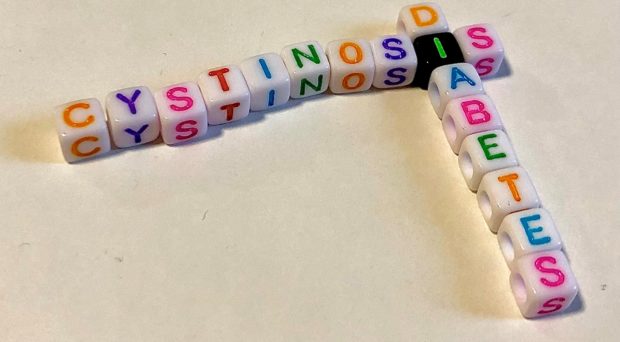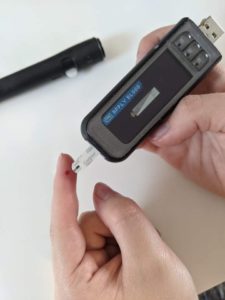
Let me ask you a few quick questions. Have you ever heard of diabetes? Probably yes. Now have you ever heard of cystinosis? I don’t blame you if you haven’t – neither did I before the Student Voice Essay. Cystinosis affects 1 in 100,000-200,000 people worldwide. People affected will have a build of cysteine crystals in the body and its organs if not treated. Treatment being a strict regime of cysteamine both orally and via eyedrops.
Type 1 diabetes however, affects 15 in 100,000 people worldwide. Those affected can’t produce insulin, thus treatment is predominantly via a strict insulin regime which is titrated throughout the day.
E has cystinosis, and having spoken with E’s grandfather I was able to get a much better understanding on how cystinosis can affect a child. While comparing her experiences to those with diabetes, I was able to unpack some of the health inequalities that patients with rare diseases face.
Treatment and Medical Technology
 Glucose monitoring devices have had many iterations throughout the decades. Real time glucose level monitoring is now available from the scan of a phone and advances in non-invasive techniques have created a safer environment for patients. For patients with cystinosis, the gold standard for disease monitoring is blood cysteine levels. Only five laboratories in the UK are equipped to measure these, creating huge delays.
Glucose monitoring devices have had many iterations throughout the decades. Real time glucose level monitoring is now available from the scan of a phone and advances in non-invasive techniques have created a safer environment for patients. For patients with cystinosis, the gold standard for disease monitoring is blood cysteine levels. Only five laboratories in the UK are equipped to measure these, creating huge delays.
In countries with less developed transportation systems, the measurement of cysteine is an even slower process: this has a grave impact on both the diagnosis and progression of cystinosis. In Brazil, there are delays in diagnosis due to a lack of cysteine level measurement, and less than 80% of patients had access to treatment.
Whilst it is undoubtedly true that funding disparities in the developing world also affect those with diabetes, disease monitoring and diagnosis is significantly easier as blood glucose levels can be measured with bedside glucose monitors, with no need to transport to specialist facilities for analysis.
Even in developed countries there are still caveats to current treatment. In Spain, adherence to cysteamine treatment decreases in teenage years. Current research focuses on improving the burden of treatments: currently cysteamine has to be given four times daily but new formulations hope to decrease this to twice daily.
Social Impacts of Disease
We want our children to have as normal and healthy a childhood as possible. When they receive a diagnosis, this can complicate things – suddenly they need regular injections, medications, procedures – all of which can be very foreign to a parent or carer, but for the child it becomes the only life they know. Young children often become experts on their own condition, but an inability to share this with peers can be very isolating and frightening.
School experiences are a vital part in a child’s life, both in the present and for the future. Increased access to information and awareness could help mitigate some of the social impacts of disease. For E, school has been a challenge due to the overprotective nature of the teachers around her: for example she is unable to participate in school sports for fear of damaging her feeding tube.
Furthermore, one of the common side effects of cysteamine treatment is bad breath – which can lead to social isolation and bullying in teenage years. Furthermore, in diabetes, poor glucose control increases the risk of bullying. Bullying can be detrimental later in life, with an increased risk of anxiety, depression, and suicidal ideation.
At a personal level, some health inequalities that are shared by many with chronic illnesses stem from a lack of understanding about an illness. This can be mitigated by creating an environment where people are encouraged to share their experiences of their health journey. As well as this, better communication between schools and families surrounding their child’s needs can also improve the overall care for a child. One school attempted to raise awareness by having a ‘Health Week’, where students were allowed to speak about a condition they or someone they knew had. This included a child with cystinosis, who was able to explain why they smelled different and that the medication that caused this was keeping them alive.
“I wanted to change the world for E tomorrow, but everything takes a long time. I understand that.”
Health inequalities can have profound effects at both a larger scale and at an individual level for all chronic diseases. Rare diseases tend to be disproportionately affected by these inequalities, and an awareness of this can help us empathise with our peers. So yes, making big changes can take time but, ultimately by listening to our peers and educating ourselves, we can gain the confidence to help tell people that it’s going to be OK.
Comments